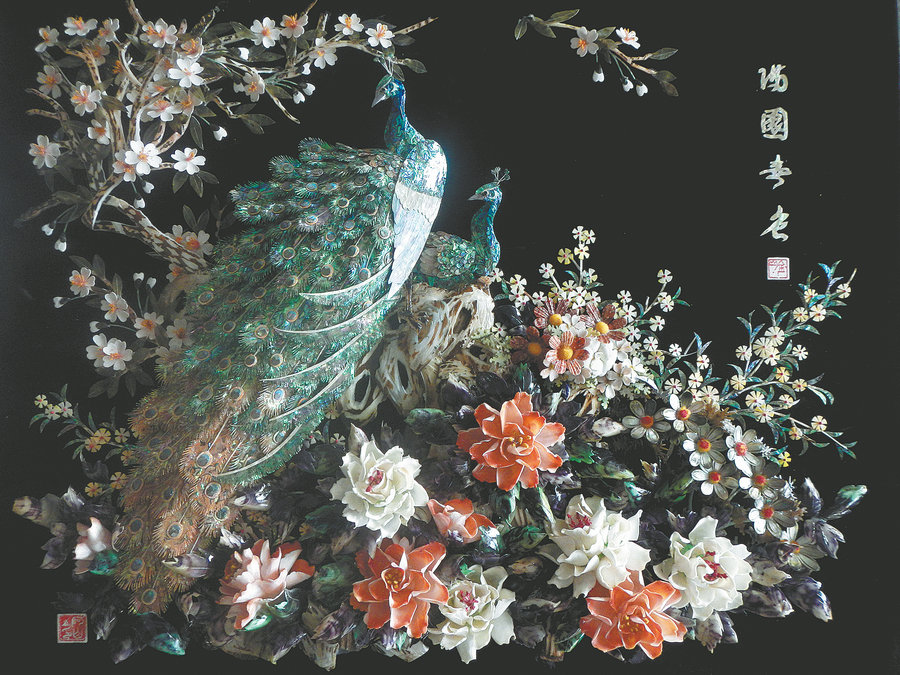Exquisite art coaxed out of its shell
By Deng Zhangyu | China Daily | Updated: 2023-10-21 09:05

Golden peacock
Jin was born into a wealthy family and his grandmother taught him about culture, especially Chinese ink painting, and he is good at depicting birds and flowers, popular themes of such work.
"To make good shell carvings, I had to master various skills, including painting, calligraphy, sculpture and carving. Besides, it consists of more than 10 complicated processes," adds Jin.
Jin was nicknamed "golden peacock" by his friends because he was so good at painting and making shell peacocks, a subject he has continued producing.
To make colorful artworks, Jin has gathered shells from across the world. Abalone pieces from Australia, the United States and Canada are widely used in his works.
"It's common for me to use millions of shells for one work. I don't know exactly how much material I use, but I do know what I can make when I see a shell for the first time," Jin says, laughing.
When seeing and touching these little gifts from the ocean, Jin can quickly make a decision on what they can be turned into based on their shape, color and thickness.

He still works 10 hours a day in his studio. "The secret to honing good skills is time and practice. I have spent all my lifetime on it," says Jin.
He says he can sit in front of the cutting wheel without drinking water for four or five hours, a habit he developed from the age of 20, when he became a shell carver at a factory.
"In the 1960s, to find a job was very difficult when China was poor. I valued my job very much, and I told myself I must give all my time to it," explains Jin on his work ethic.
The shell decorations and designs of shells produced at the factory Jin worked at were in high demand, and most were exported overseas.
In the 1980s, shell painting became very popular in Dalian, where the craft can be dated back to the Han Dynasty (206 BC-AD 220), according to discoveries at archaeological sites.
After the factory closed down in the 1990s due to the items' waning popularity, Jin started making his own shell artworks.
























